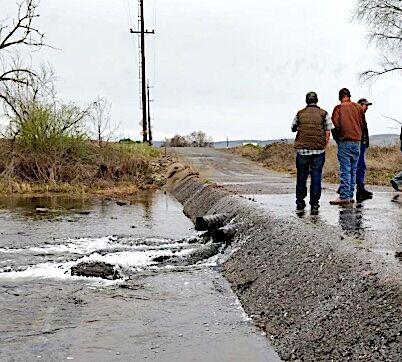Courtesy photo/RCDTC — The Resource Conservation District of Tehama County is facilitating modifications for an improved fish passage and vehicle crossing at the Dye Creek and Shasta Boulevard Weir Crossing north of Los Molinos.
In collaboration with project partners, the Resource Conservation District of Tehama County is facilitating the planning process and construction of an improved fish passage and vehicle crossing at the Dye Creek and Shasta Boulevard Weir Crossing north of Los Molinos.
One hundred percent of designs are complete, with permits currently underway, according to RCDTC, adding an environmental impact analysis has begun.
The existing culverts at the crossing are undersized and plugged with stream sediment during high-flow periods, RCDTC reported. In addition, the trenches are too high for upstream fish passage under most flow conditions. The California Department of Fish and Wildlife (CDFW) determined that the weir crossing impedes fish passage during low or receding flows. During these events, it acts as a barrier and separates upstream from downstream fish habitat and the larger Sacramento River watershed.
Project partners KSN Engineering, Tehama Environmental Solutions, Tehama County Public Works, and the CDFW determined that it would be financially and ecologically beneficial to replace the two underperforming culverts with eight concrete box culverts lined in native channel bed material while keeping the current vehicle low water crossing intact, the release said.
On behalf of the project partners, the RCDTC received $2.65 million in Prop 68 grant funds through the State of California Wildlife Conservation Board to implement the Dye Creek and Shasta Boulevard Weir Crossing project.
The crossing modification is tentatively slated to be completed by June 30, 2024.
After construction, the improved crossing will allow fish passage to upstream non-natal and rearing habitat within Dye Creek that is suitable for juvenile salmonids, including the endangered winter-run Chinook salmon as well as spring and fall-run Chinook salmon, steelhead and rainbow trout, and Pacific lamprey, RCDTC said.
As keystone species, salmon directly affects numerous […]
Full article: www.appeal-democrat.com

